
To all who come to this place of possibility: welcome. Possibilityland is your land. Or… It could’ve been!
Today, we’re going to do something we’ve never done before: We’re going to step into Disneyland as it might have been. We’ll walk through themed lands of Disneyland that look quite different from the ones you know and examine the attractions that were cut just before they came to life. In Possibilityland, we can find attractions, areas, and even full lands that simply never came to pass. Think about it: if someone had said “Yes!” instead of saying “No!” (or vice versa), this could be the Happiest Place on Earth!
First, we’ll step into this park of could-bes and see what visitors to a "Possibilityland" would find. Then, on the final page, we’ll explore how these projects collapsed and see if it’s true that “good ideas never die at Disney.” Quite a few of these forgotten projects have re-appeared with their stories living on elsewhere, and more could reappear at any time. Put on your walking shoes! We’re on our way…
MAIN STREET, U.S.A.
Ah, Main Street, U.S.A. It feels a bit like home, doesn’t it? And that’s precisely what Walt planned. In fact, you probably already know that this particular “Main Street” is based on Walt’s childhood memories of the town where he grew up – Marceline, Missouri. More than a historical recreation, Main Street is instead a romanticized vision of simple, Midwestern life viewed through the eyes of a child: perfect.
Walt believed that Main Street captured a snapshot of a very unique time in American history: the brief period where the gas lamp and the electric lightbulb co-existed; with horse-drawn carriages and “horseless” carriages both making their way from Town Square. It’s unlikely that Disneyland’s Main Street will ever depart from this tried-and-true formula, but here in Possibilityland, there’s a major change in this grand entry – two new lands radiating off from Main Street…
Liberty Street
Opening Date: 1958
Status: A full land connected to Main Street
It’s hard to say which Walt loved more – the past or the future – but his love for the former is on display along Liberty Street. The park’s Main Street, U.S.A. may be set at the turn of the 20th century, but Liberty Street departs from that time period and instead recreates the most important moments of the American story: the Revolutionary War, when American colonists declared their independence from Great Britain and created the United States in 1776.
Liberty Street appears just past the Opera House, jutting northeast off of the park’s Town Square. From the avenue’s entry, the first thing you might notice are the soaring masts of a sailing ship, docked directly ahead at Griffin’s Wharf. As you start to walk toward it, you’ll notice that the electric conveniences and Victorian storefronts of Main Street vanish, replaced with the colonial dressings of Philadelphia, Baltimore, and Boston in the 1700s.
Thirteen buildings make up Liberty Street, representing the thirteen American colonies. Just as Main Street offers authentic goods and services faithful to its era, Liberty Street is lined by an apothecary, a print shop, a glassblowing studio, and a blacksmith barn, each staffed by real craftsmen practicing their skills.
However, the land’s real signature attractions reside in Liberty Square, the quaint cul-de-sac at the far end of the street with the beautiful, lantern-lit Liberty Tree in the center. It’s there that you’ll find an exhibit of the U.S. Capitol in Miniature, originally completed in 1935.
Across the square is the Hall of the Declaration of Independence, a stirring and patriotic attraction featuring paintings that depict the dramatic story of America’s birth, culminating in a face-to-face encounter with a faithful recreation of the Declaration of Independence itself.
Finally, beyond the gorgeous brick façade of Philadelphia’s Independence Hall, the park plays host to The Hall of Presidents, an emotional tribute to the nation’s brave leaders, each recreated as wax figures. The lantern-and-candle lit land is a sight to behold each night, and a captivating reminder of ‘the ideals, the dreams, and the hard facts that have created America.’ Liberty Street isn’t the only new land along the park’s entry, though.
Edison Square
Image: Disney
Opening Date: 1959
Status: A full land connected to Main Street
Walking right down the middle of Main Street, U.S.A., much about Possibilityland looks familiar. But when you reach the park’s Central Hub, you’ve got a new option. Standing in the Hub and facing Sleeping Beauty Castle, a new path has appeared to the Southeast. In fact, the horse-drawn carriages from Main Street make a sharp right and proceed into this new land. If you follow one, you’ll find yourself standing before a wrought iron arch supported by redbrick columns. This is Edison Square.
If Main Street immortalizes “Anytown, USA” and its reaction to electricity, then Edison Square more succinctly examines progress and innovation in our lives. Stepping into this land, you’ll notice yourself surrounded in Chicago’s suburban graystones, New York’s storied brownstones, wooden San Francisco, and the colonial brick streets of Boston, now all strung up with electric lightbulbs. Pressing further into the land, you’ll see a town square with a small, gated park in the center. That park is built around a statue of Thomas Edison with his right finger pointed skyward.
Make no mistake: Edison (with his 1,093 U.S. patents) has earned a land at Disneyland. To his credit are the inventions of the electric light bulb, of course, but also power utilities, the phonograph, the motion picture camera, and the founding of General Electric. Fittingly, General Electric sponsors this land and its signature attraction: Harnessing the Light, a walkthrough show chronicling the advance of American society thanks to the spark Edison.
The clever showcase – concealed behind the cul-de-sac of the land – was a triumph. Guests can step into a prologue exhibit about progress and Edison’s discoveries, milling about until the automatic doors open inward, and guests pass into a tiered standing theatre viewing a typical American home as it appeared in 1898 – just before electricity made its way into living rooms. The lovable Wilbur K. Watt narrates the show from his rocking chair, explaining how the stove, icebox, and phonograph are all marvels of innovation, though they’re all human-powered. Wilbur, for his part, is an electro-mechanical figure (the precursor to Animatronics). Even if he can’t do more than simple, repetitive motions (think Jungle Cruise animals), he is a marvel himself, and a sign of what’s to come. After his three-minute presentation, doors open to the left as guests pass into the next room – the same home in 1918 as bundles of strung wires power water heaters, lights, refrigerators, and other appliances, for another three minutes.
The same continues in 1958 (the present when the attraction opened, showcasing the marvels of climate-control, television, microwave ovens, and more) and finally in a fourth scene representing the home of the future: luminous walls, prototype personal computers (or as close as the designers in the 1950s could get), space scanners, and more. In this final scene, you’re invited up into the stage to explore the wonders yourself! …But only until your three minutes are up. Then, you’re guided away and into a final epilogue, inviting you to explore the wonders of General Electric products at work.
In Possibilityland, Main Street looks a lot different after all, with two new auxiliary lands built off of its eastern side. But that’s only the beginning!
ADVENTURELAND
Passing into Adventureland, the DNA of Walt’s original creation remains: towering jungles, exotic waterfalls, and a “main street” that purposefully juxtaposes civilization on one side and uncharted wilderness on the other. But something has changed here. For one thing, Michael Eisner arrived at Disney in the 1980s, fresh from a stint as CEO of Paramount Pictures. If Eisner knew anything, it was movies. It was Eisner’s controversial assertion that Disneyland could be a place where you could ride the movies and – even more startlingly – that they didn’t necessarily have to be Disney movies.
Possibilityland proves the grand, cinematic scale that Eisner envisioned, particularly here in Adventureland. Designers saw a chance to fundamentally change Adventureland. Here in Possibilityland, that vision became reality… big time.
Indiana Jones and the Lost Expedition
Opening Date: 1989
Status: A mini-land within Adventureland containing two rides
So sure, Adventureland might have the same basic underlying look, but something here has changed. A wave of continuity has swept through the land, uniting every attraction, store, restaurant, and prop into a single time period and a single overarching story that unites them all. As you enter under the iconic Adventureland bridge, you begin to notice a hazy mist raining down from the trees overhead.
Those trees are tangled up with wires and excavation lamps that seem to dim and flash in sync with a churning power generator. Tattered canvas awnings, collapsed Indian ruins, and rusted excavation materials make it clear that Adventureland has changed from a would-be accurate representation of today’s jungles to a cinematic adventure set long ago. In fact, it’s the late 1930s. The sensationalized black-and-white news media of the day has drawn the nouveau-riche of European high society (that’s us) to this remote jungle outpost with promises that we can leave our hum-drum lives behind and find what we really crave: adventure.
Phonographs playing jazz standards off in the distance signal that we’ve arrived just in time. This outpost is centered around a massive archaeological project looming ahead beyond the trees: a stunning Southeast Asian temple right on the banks of a misty, forgotten river, with waterfalls tumbling from all around it. This waterlogged River Temple contains a land-within-Adventureland: Indiana Jones and the Lost Expedition.
Winding through the overgrown bamboo and through an archaeological camp, you’ll find a rusty motor pool for Indiana Jones Expedition. This off-roading dark ride begins outdoors, sending guests aboard troop transports along the river’s edge, across a shaky suspension bridge, through the ancient jungles, and into the collapsing temple of the water’s edge. There, riders encounter an ancient altar, darts, and (of course) a rolling boulder before making their way into the heart of the temple: a volcanic chasm sending guests teetering along canyons and across bridges above molten hot lava.
But here’s the real kicker: the Lost Expedition has even more. Passing the motor pool and proceeding further into the jungle toward the towering cliff backdrops (which cleverly disguise the huge showbuilding), guests can instead board the Ore Car Coaster and descend into the temple in a style more familiar to fans of Indiana Jones and the Temple of Doom. The swaying, tilting mine car coaster would take place in that same volcanic chasm, spiraling along the lava, roaring down drops, and racing head on toward the jeeps navigating the same chamber as the two rides interact.
If that’s not enough, you have another way to see the massive scale of the Lost Expedition. Since the construction of the massive project would necessitate re-routing of the Jungle Cruise, Disney has decided to plus the attraction big time. For one thing, the dainty, peppermint-striped canopies of the Jungle Cruise ships have disappeared. To fit with the new 1930s Indiana Jones storyline, Jungle Cruise received tattered canvas canopies, a good rusting of their hulls, and an elaborate new boathouse queue.
But it gets better. The massive River Temple façade would replace the African Veldt scene (which is, admittedly, fitting, since the entire land would now take place in India), but rather than just allowing the Jungle Cruise to sail around the exterior, guests become part of the story as a collapsed temple tower diverts the boats into the River Temple along a cooled lava vent as even the Jungle Cruise boats emerge in the temple’s volcanic heart with the ore carts flying by and Jeeps sputtering on below.
If that doesn’t help you appreciate the grand scale of this one-of-a-kind attraction, consider that even the Disneyland Railroad chugs through the temple on a shaky wooden trestle positioned high above the roiling lava. Lost Expedition may very well be the most dynamic and epically sized project Disney has ever brought to life, with four rides taking place in the chamber. Click and expand the photo above for a much larger view.
As you can see, Possibilityland is packed with unimaginable wonders. But there’s even more to see as we take the path from Adventureland to a Frontierland reborn…
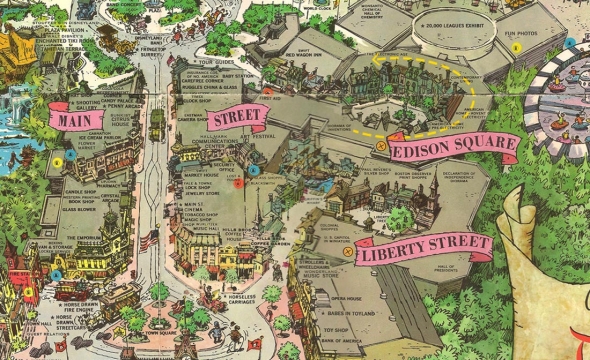
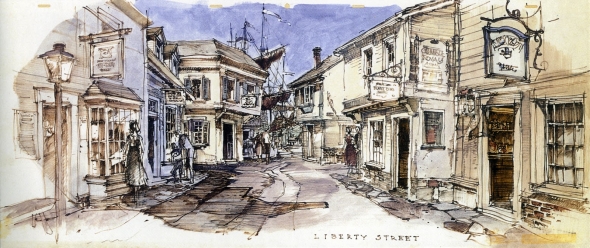
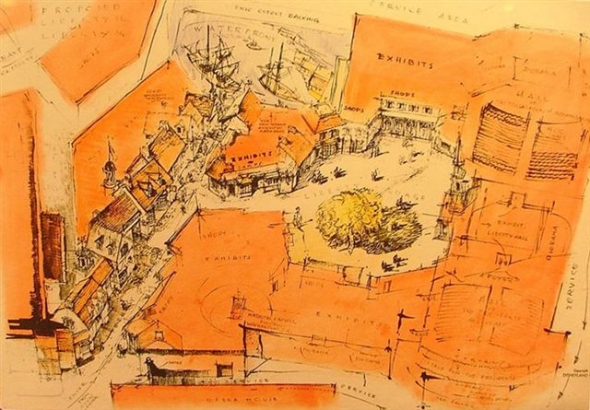
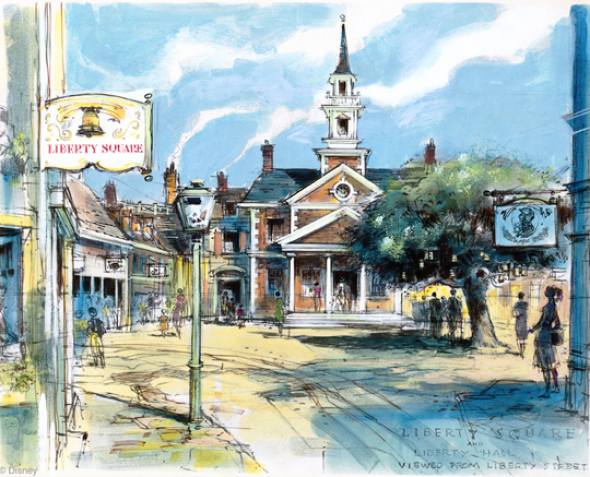
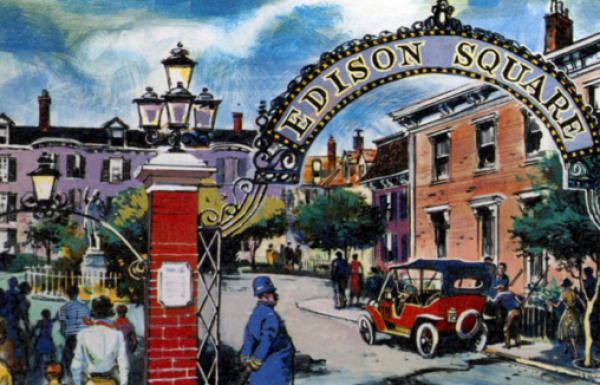
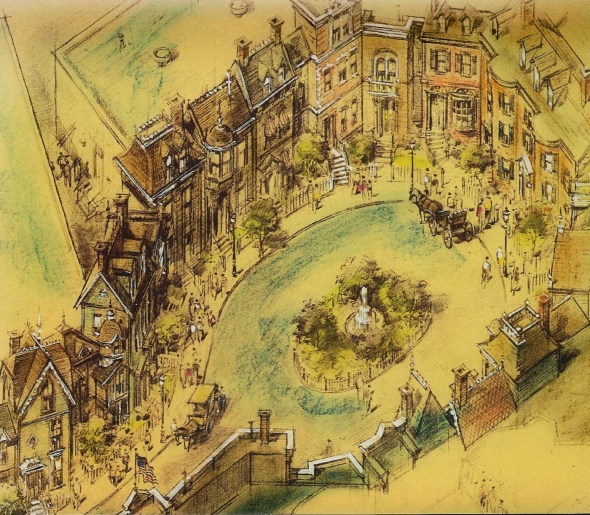
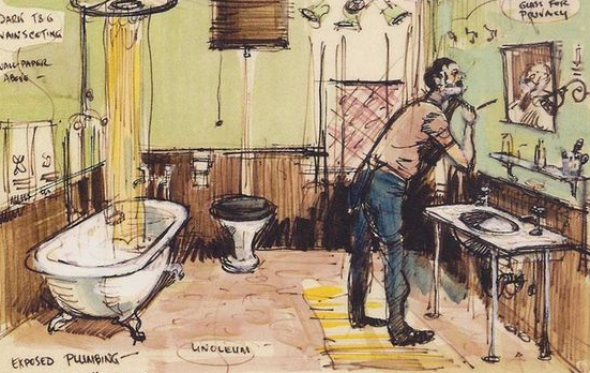
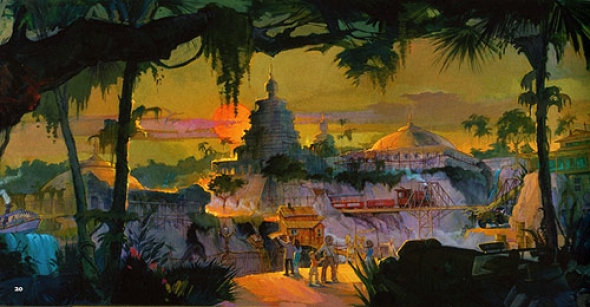
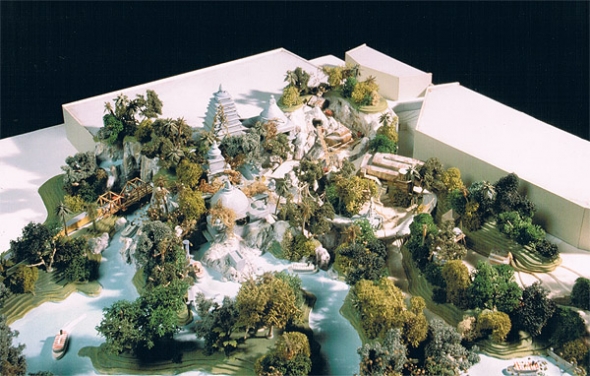
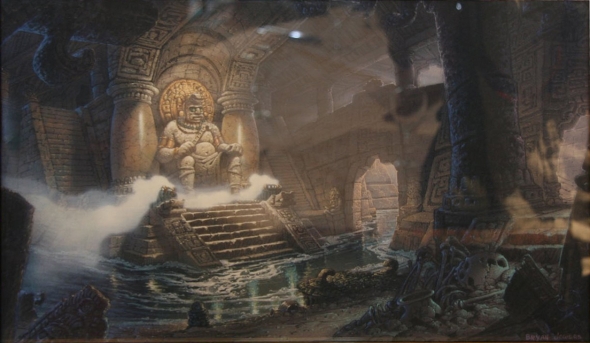
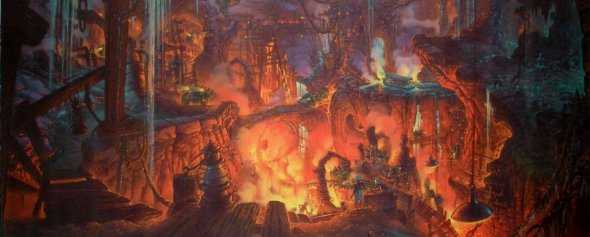

Comments
It is hinted at but I thought I'd mention that the drawings done by Marc Davis for the Snow Palace directly inspired the look of Frozen. That picture of the Icicle Princess is Elsa! Just modernised for today's audience.
Just goes to show that good ideas never truly die.
Ps. I love these in depth articles, great read as always!